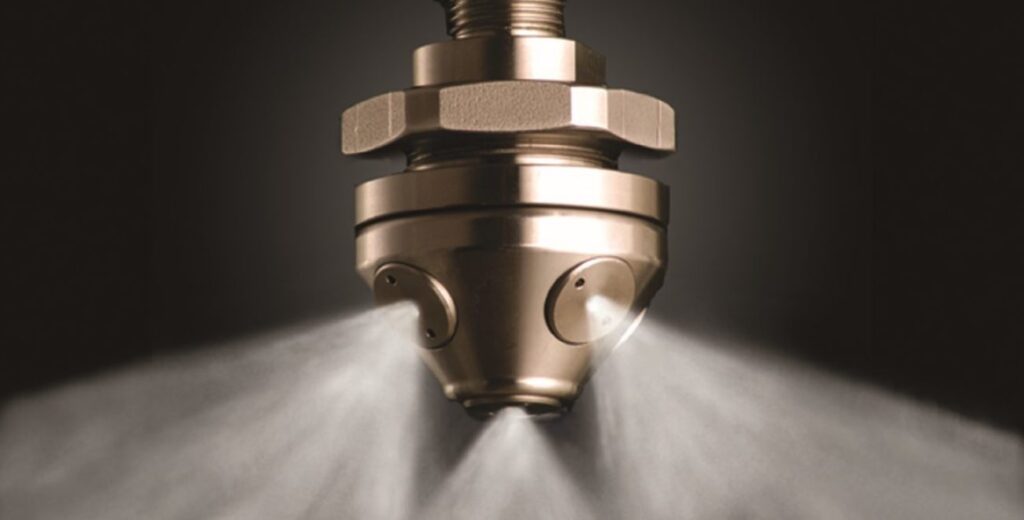Water Mist Systems: Advanced Fire Protection Technology

Fire protection technology has evolved significantly, and one of the most promising innovations is the water mist systems approach. By atomizing water into ultra-fine droplets, these systems suppress flames more efficiently, use less water, and cause minimal collateral damage. Suitable for residential, commercial, and specialized environments (such as data centers, museums, or marine settings), water mist systems are gaining recognition as an effective alternative or complement to traditional sprinklers.
AMSCO offers sophisticated water mist systems tailored to diverse settings, combining design flexibility with high-performance suppression capability.
How Water Mist Systems Work
Water mist systems function on the principle of using very fine droplets (usually in the micrometer range) to control fire through three primary mechanisms:
-
Cooling: The small droplets evaporate rapidly, absorbing heat from flames and hot gases.
-
Displacement of Oxygen / Gas Dilution: The vapor formed pushes away oxygen in the flame zone to slow combustion.
-
Surface Cooling / Wetting: Fine droplets reach hot surfaces and prevent re-ignition by maintaining lower temperatures.
Because of these mechanisms, a smaller overall volume of water is required compared to conventional sprinkler systems, reducing water damage and supporting faster fire control.
Advantages of Water Mist Systems
Reduced Water Damage
Traditional sprinkler systems deliver large volumes of water that can flood zones. Water mist systems use much less water, minimizing water impact to property, electronics, or sensitive equipment.
Efficient Fire Control
Fine mist travels in vapor form, penetrating hidden spaces or corners. This makes water mist systems ideal for protecting compartments, narrow voids, or intricate architectural layouts.
Environmental Benefits
Lower water usage and efficient suppression reduce waste. Many systems operate without chemical additives, making them environmentally friendly.
Flexibility in Design
Water mist systems can be integrated into existing infrastructure or new builds. They adapt to residential spaces, heritage buildings, or locations where aesthetics or space constraints matter.
Compatibility with Sensitive Environments
In places like data centers, museums, archives, or laboratories, water damage to assets is a serious concern. The minimal water delivery of mist systems provides a balance between fire protection and asset preservation.
Applications and Use Cases
Water mist systems are suitable for a range of environments:
-
High-risk areas with electronics: Server rooms, telecommunication hubs
-
Heritage and museum spaces: To protect artifacts without soaking interiors
-
Residential or high-end homes: Where minimal water intrusion is crucial
-
Industrial and engine rooms: For compact compartments with high heat
-
Marine, offshore, and tunnel settings: Where space and weight constraints exist
AMSCO’s water mist solutions are designed to perform across these scenarios, ensuring both safety and compatibility with complex environments.
Design Considerations and Standards
Designing an effective water mist system involves:
-
Hazard assessment: Fire load, fuel types (solid, liquid, gas), ventilation
-
Droplet size and coverage: Matching nozzles and pressure to make sure mist reaches all zones
-
Pipework and pressure systems: High pressures are often required (100+ bar systems may be used)
-
Integration: Combining with detection, alarms, and control systems
-
Standards compliance: Meeting fire codes, local building regulations, and relevant standards (such as those from NFPA or local equivalents)
Proper design ensures the mist system activates only where needed, suppresses fire quickly, and avoids unnecessary activation.
Maintenance, Testing & Reliability
Like any fire protection system, water mist installations require regular inspection and testing:
-
Annual or bi-annual inspections: Check nozzles for clogging or corrosion
-
Pressure tests and flow tests: Validate that required droplet performance is met
-
Component replacement: O-rings, seals, or aging parts may need periodic replacement
-
System flushing and cleaning: Prevent debris or scale from impairing mist delivery
A well-maintained system retains its reliability over long service life.
Challenges and Considerations
While powerful, water mist systems must overcome certain challenges:
-
The higher cost for specialized nozzles and high-pressure infrastructure
-
Design complexity especially when retrofitting older buildings
-
Standards variation across regions may complicate approvals
-
Risk of misapplication if designers underestimate fire hazards or mis-size components
Working with experienced professionals like AMSCO ensures that such challenges are addressed through proper engineering and compliant designs.
Conclusion
Water mist systems represent a forward-looking approach in fire suppression—delivering powerful flame control with minimal water damage. Their adaptability, efficiency, and suitability for sensitive or compact spaces make them an attractive option for modern fire protection.
With AMSCO’s expertise in designing, installing, and maintaining water mist systems, property owners and facility managers can embrace advanced fire safety solutions tailored to their environments. When fire protection must be effective and unobtrusive, water mist systems offer an elegant and capable choice.







